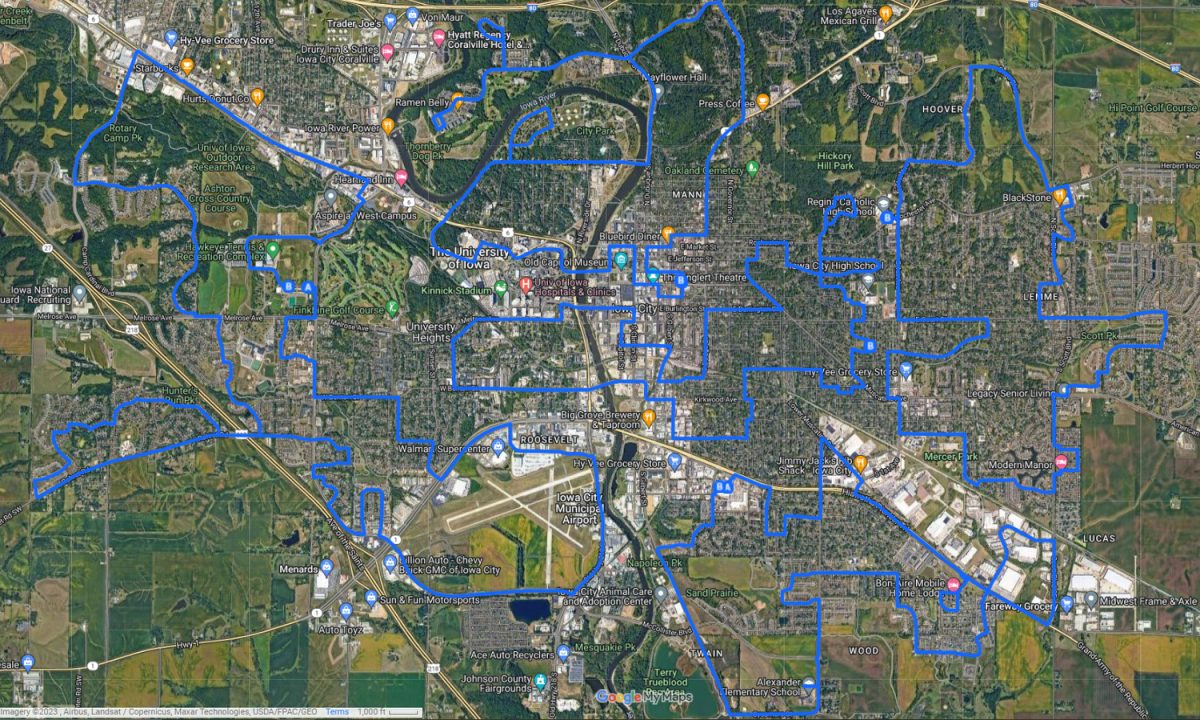As the summer continues to heat up in Iowa City, citizens and volunteers are uniting to conduct an urban heat island mapping campaign.
Rising temperatures have been in the news this summer, but Iowa City Climate Action Matters has a plan to understand the heat in the city. After receiving a joint grant from the National Oceanic and Atmospheric Administration, the cities of Iowa City and Cedar Rapids began planning the mapping event in tandem, called “Spot the Hot.”
Daniel Bissell, a Climate Action Analyst for the City of Iowa City, discussed the one-day, city-wide project titled and how it could help Iowans keep cool in the coming years.
“We’re measuring the urban heat island effect, which is the phenomenon of the built environment, particularly buildings, roads, and especially parking lots, and how they tend to absorb and reradiate heat. These areas can be significantly hotter than the surrounding countryside,” Bissell said.
The mapping is done via a sensor, which records the temperature, humidity, and precise GPS location once per second. The sensors were developed by CAPA Strategies, which partnered with NOAA to initiate the heat mapping campaign.
“Our community, citizens, scientists, volunteers, are going out in their own personal vehicles with these sensors attached on predetermined routes,” Bissell said.
Citizens drove one of five routes circling Iowa City. These routes combined to map the whole city in one day, and were driven once at 6:00 a.m., 3:00 p.m., and again at 7:00 p.m. to measure how the temperature fluctuates throughout the day across the city.
The results of the mapping event will be announced at the 2023 Climate Fest, set to run from Sept. 18-23, 2023. With this data, researchers will identify the hot spots of Iowa City, and work to reduce the effects of heat in that area.
Megan Hill, a Climate Action Engagement Specialist for the City of Iowa City, discussed what comes next for the program.
“We’ll know more when we know where the hotspots are, then we’ll connect with various groups like Johnson County Public Health, and our Parks and Recreation Department to kind of target the areas,” Hill said. “They plant a lot of trees every year, so this will help them figure out which spots maybe we can target.”
According to Bissell, the deadliest weather phenomenon is heat waves, not tornadoes or hurricanes, something that makes a program like Spot the Hot so important to undertake.
“We want to get a sense of where these urban heat islands exist in Iowa City so we can plan to mitigate them, and plan for high heat events so we can keep our citizens safe, and plan for location of cooling centers or resilience hubs,” Bissell said.
He also explained that “Spot the Hot” has been a labor of love, not just for Iowa City, but for it’s partner Cedar Rapids as well, with whom it applied for the NOAA grant. The community’s vigor for the initiative, as volunteers trickled in to gather their sensors and route data was noticeable.
One such volunteer, Matisse Arnone, described why events like these are important in the fight for climate activism.
“I think it really has to do with being an active member of your community because there are so many things with the climate crisis that you can do, and you can talk about on such a broad scale, like policy initiatives,” Arnone said. “You want to change the world, but changing the world starts with doing the work in your community.”



